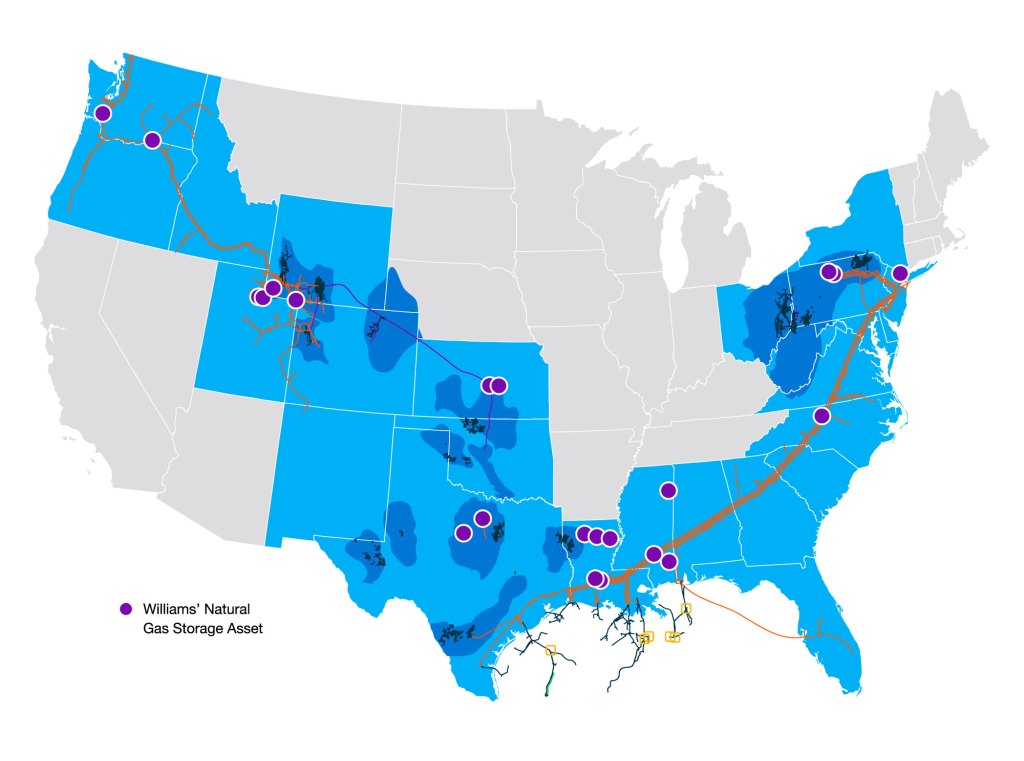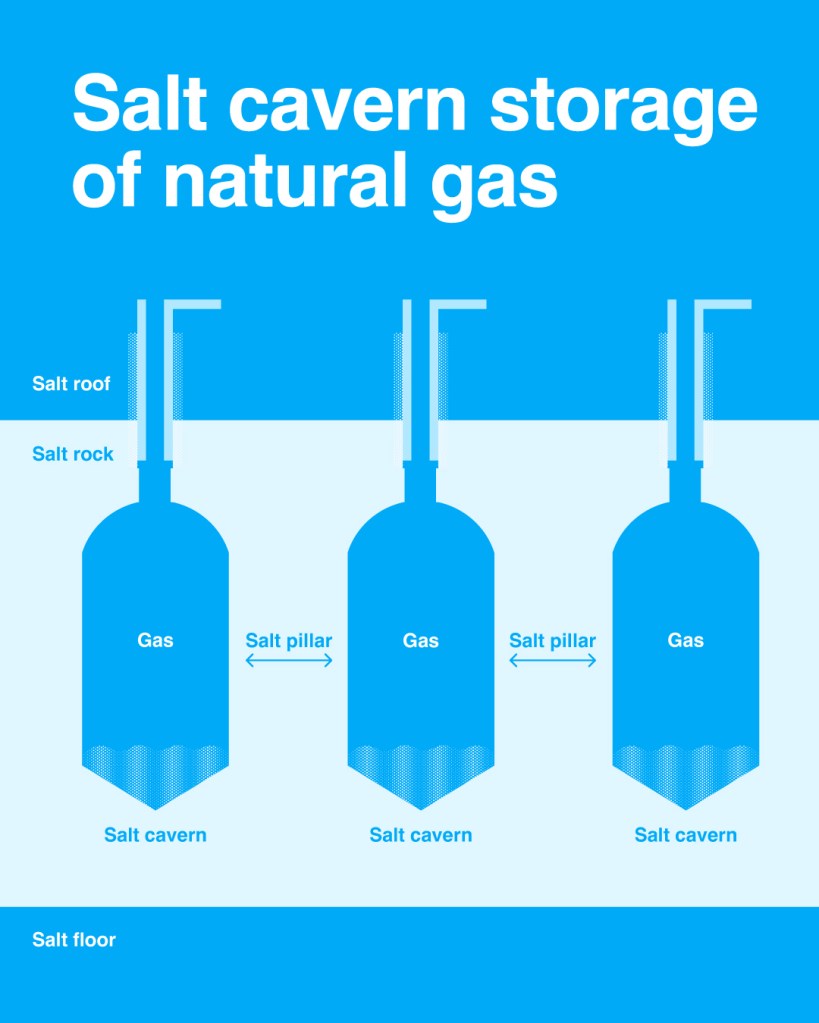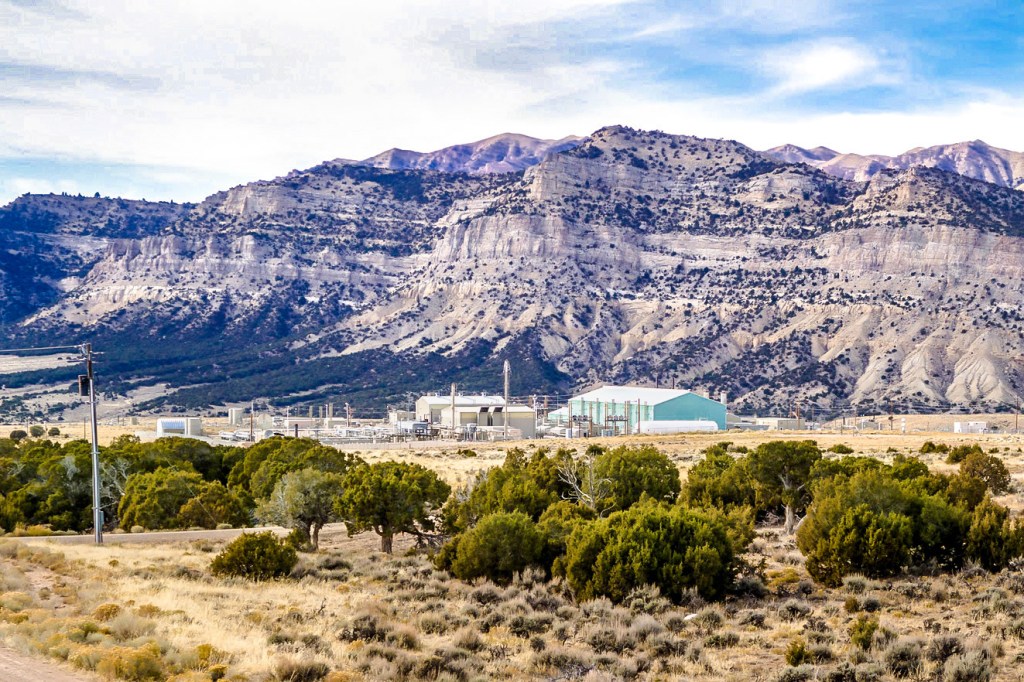Here’s a story about storage.
You know about clothes storage (closets), bank storage (vaults), and food storage (freezers and pantries). But do you know about storage of natural gas?
The concept is the same — keeping something safe and contained until you need it, but specifics might be surprising.
Natural gas can be stored in pipelines short-term while it moves from place to place, but large amounts are injected and stored in underground caverns, reservoirs or wells for longer term storage.
And if liquified, natural gas can be stored in above ground tanks like those at our Pine Needle facility in North Carolina. (This is not to be confused with natural gas liquids, which can be stored underground in caverns like these.)

But why do we even need to store natural gas?
Like that bank account, we need it for a rainy day. Weather peaks create demand for winter home heating or summer air conditioning. And more natural gas-generated power is needed with the rising electrification of homes and cars, onshoring of manufacturing and to support AI-driven data centers. On top of that, natural gas also is a critical back up to renewable power.
Natural gas also is stored near LNG terminals so it can easily be withdrawn and liquified for shipping to other countries.
Williams is the largest natural gas storage operator in proximity to LNG demand along the Gulf Coast. Our portfolio includes six underground natural gas storage facilities in Louisiana and Mississippi after the acquisition last year of Hartree Partner’s storage facilities in Louisiana and Mississippi.
With a capacity of 115 billion cubic feet (bcf) of natural gas, those facilities can store enough natural gas to supply current LNG demand in Texas and Louisiana for one week.
And one facility is about to get bigger.
Williams recently announced an expansion at the Pine Prairie location with a new salt cavern to be constructed to store an additional 10 billion cubic feet of working natural gas.

How are salt caverns created?
Such caverns are mined out of naturally occurring salt beds deep within the earth. To do that, a well is drilled through the overlying rock layers to reach the salt formation. Then freshwater is slowly injected into the well to dissolve the salt until a cavern of the desired size and shape is created.
The most notable example of this storage method is the National Strategic Petroleum Reserve, which stores the nation’s reserve of crude oil for use in national emergencies. According to the Pipeline and Hazardous Materials Safety Administration, salt domes are suited for this purpose because they are dry and geologically stable, allowing the products to be safety isolated and stored in large quantities.
Why more, why now?
Williams CEO Alan Armstrong says storage is critical to keep up with demand here and abroad for abundant, safe and reliable natural gas.
While demand for natural gas in the U.S. has grown 47% since 2013, necessary infrastructure and storage capacity has lagged.
Infrastructure to deliver natural gas has only increased by 26% and storage delivery capacity by just 2%.
Expanding U.S. storage will not only close the gap, it would benefit other countries.
In a recent interview, Armstrong said the United States could become the natural gas storage bank for the world.
“If you are going to store gas, it probably doesn’t make sense to pay for it to be liquified, sent overseas and sit in liquid storage. It makes more sense to store where we have all the underground storage capacity here in the U.S.”
Did you know?
Williams now operates 417 bcf of storage capacity across it’s footprint. This includes facilities acquired in 2022 from NorTex Midstream and in 2023 from MountainWest, where the Clay Basin facility was expanded by 7.8 bcf in 2024. Additionally, Northwest Pipeline connects to six natural gas storage facilities located along its system.

